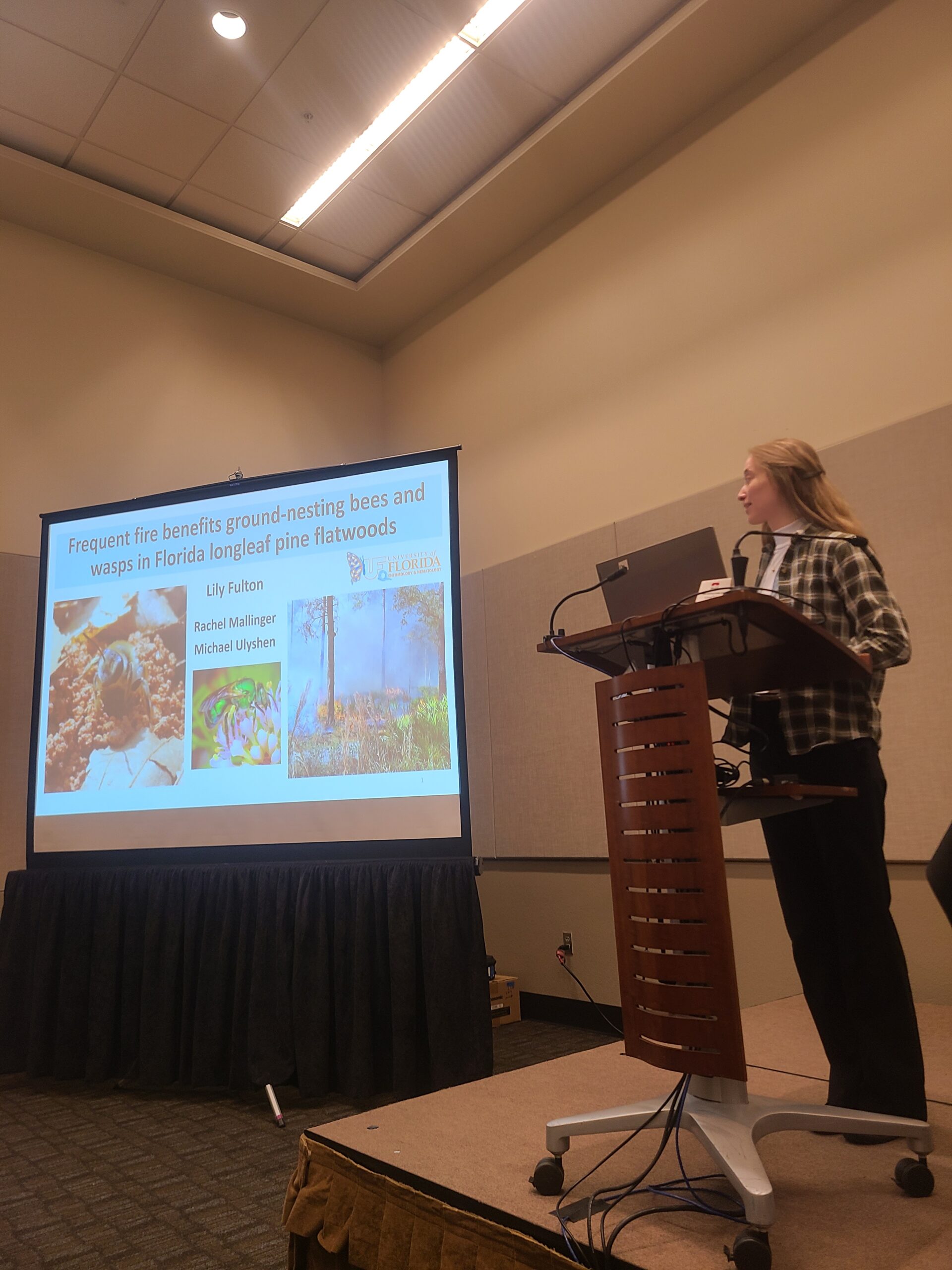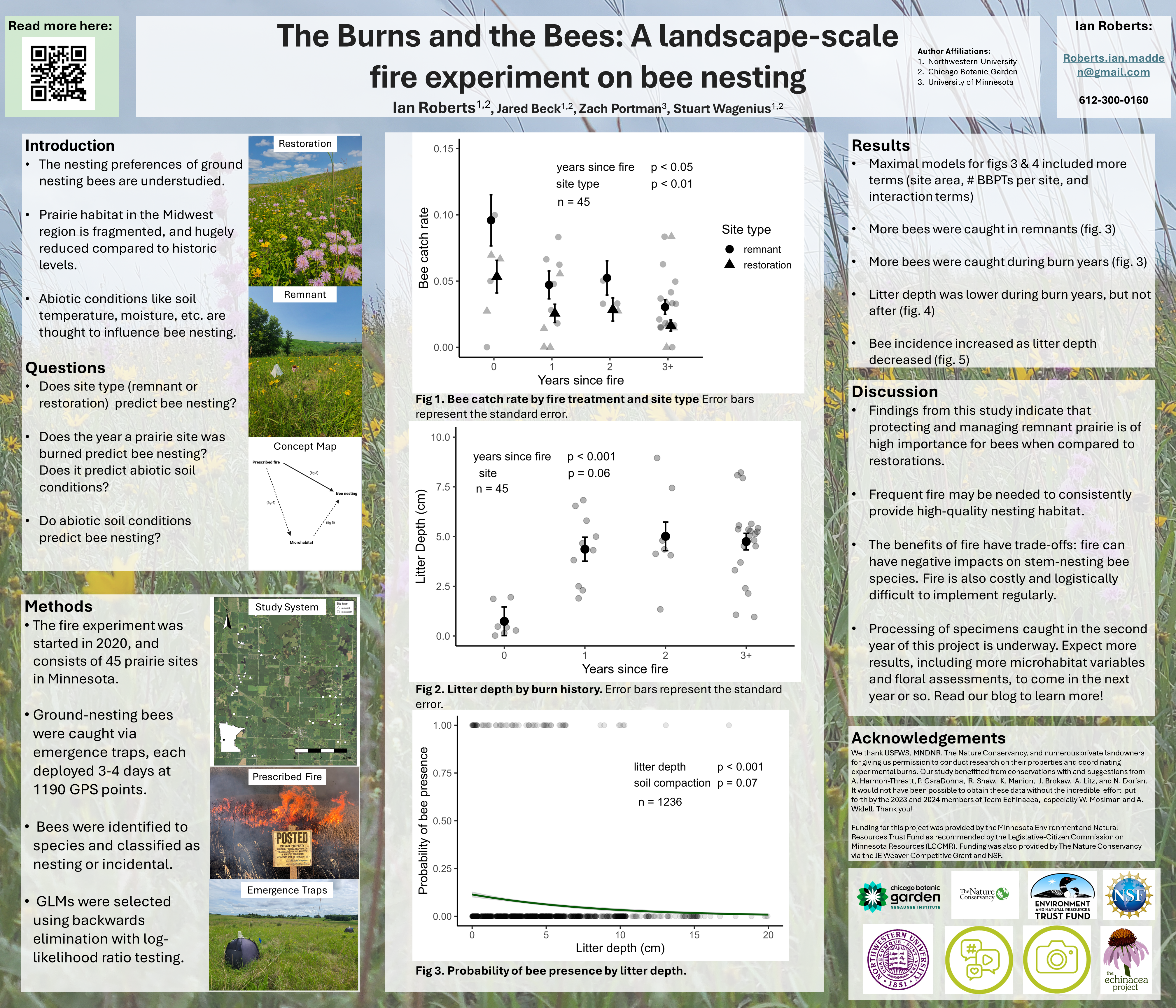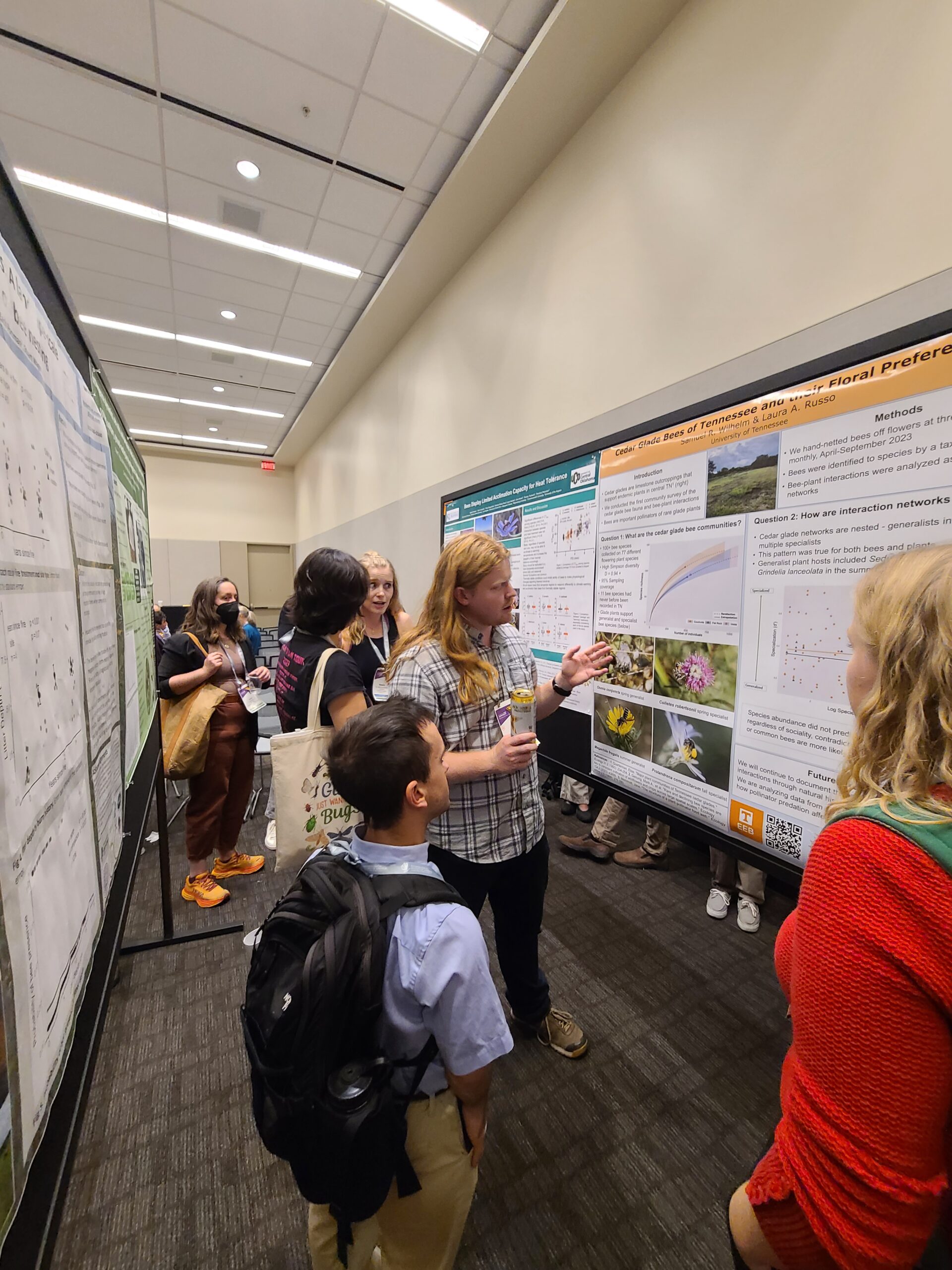Hey all!
It has been a packed few days here in Phoenix, and I’d like to describe some of the presentations I saw at yesterday’s ground nesting bee symposium. There was a broad range of topics, including the microbe communities found on pollen balls, brood parasite and host interactions, rare desert bees, and more! Nick Dorian had great results to share from his mark-recapture work in New Jersey, which was great to see after he demonstrated that method to Team Echinacea over the summer. Lily Fulton’s presentation really stood out to me: She is also studying prescribed fire, at a long term experimental fire site in Florida longleaf pine flatwoods. they found higher bee and wasp abundances during burn years, as well as higher proportions of bare ground. This is strikingly similar to our research findings! It was great to chat with her about it over my own poster.


It’s been incredible getting to meet so many researchers who care about native bees. Many stopped by to have a look at the poster! I’ve cited many of them in my previous work, so running into them in person is almost like meeting a celebrity. One consistent interest I’ve gotten from attendees is to look a the community composition of bees in the different treatment groups. Perhaps the increased abundance in the year of a burn we’re seeing is because of a cohort of burn-loving ground nesters, who don’t stick around in following years. It’ll be exciting to look into!

Overall, this has been a fantastic experience and opportunity to expand my network. I got to reconnect with some old friends, and make plenty of new ones. I can’t wait to get back to work on my thesis, now that I know who might be viewing it once it’s published! Expect more on that in the next few months.


